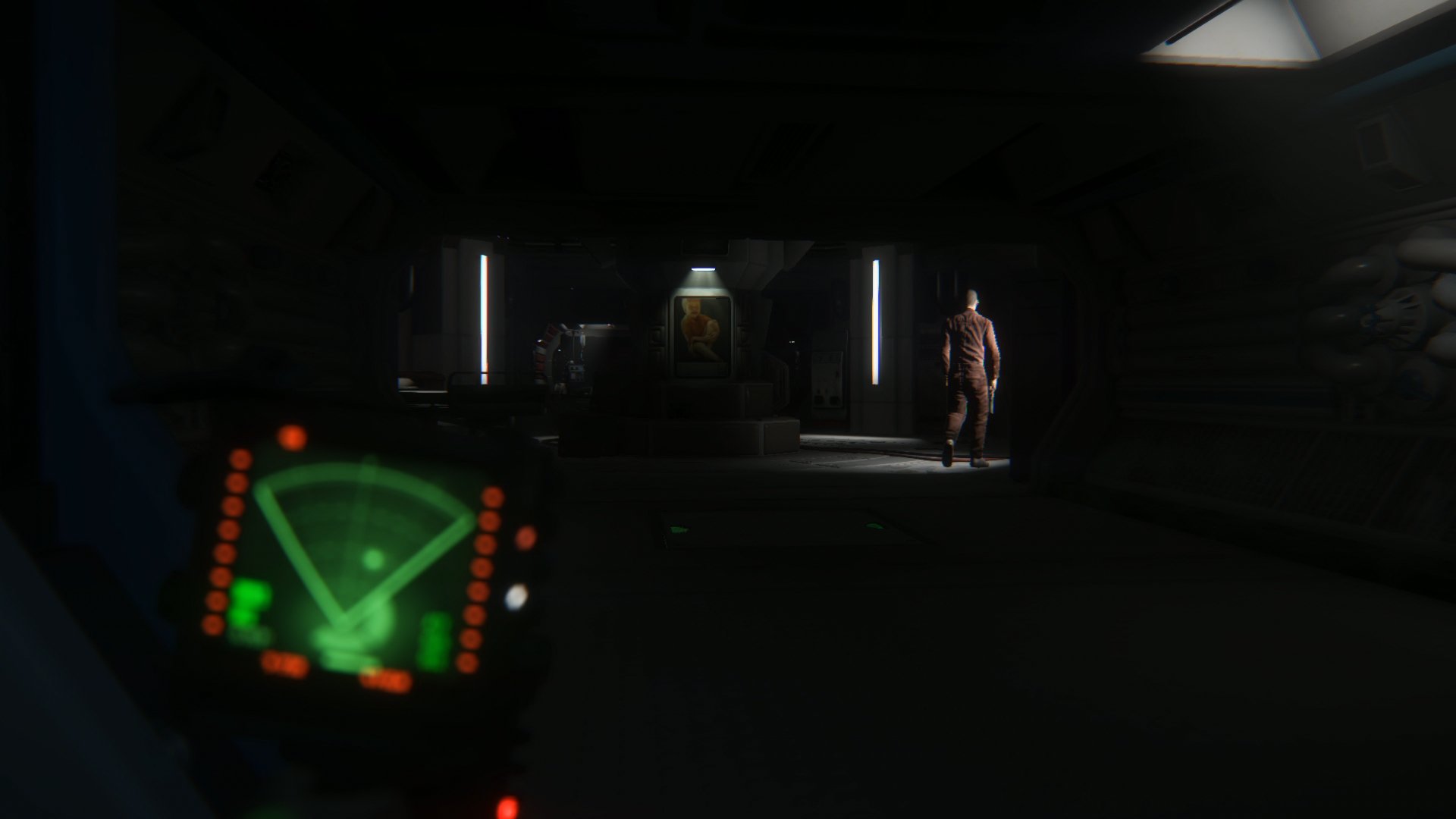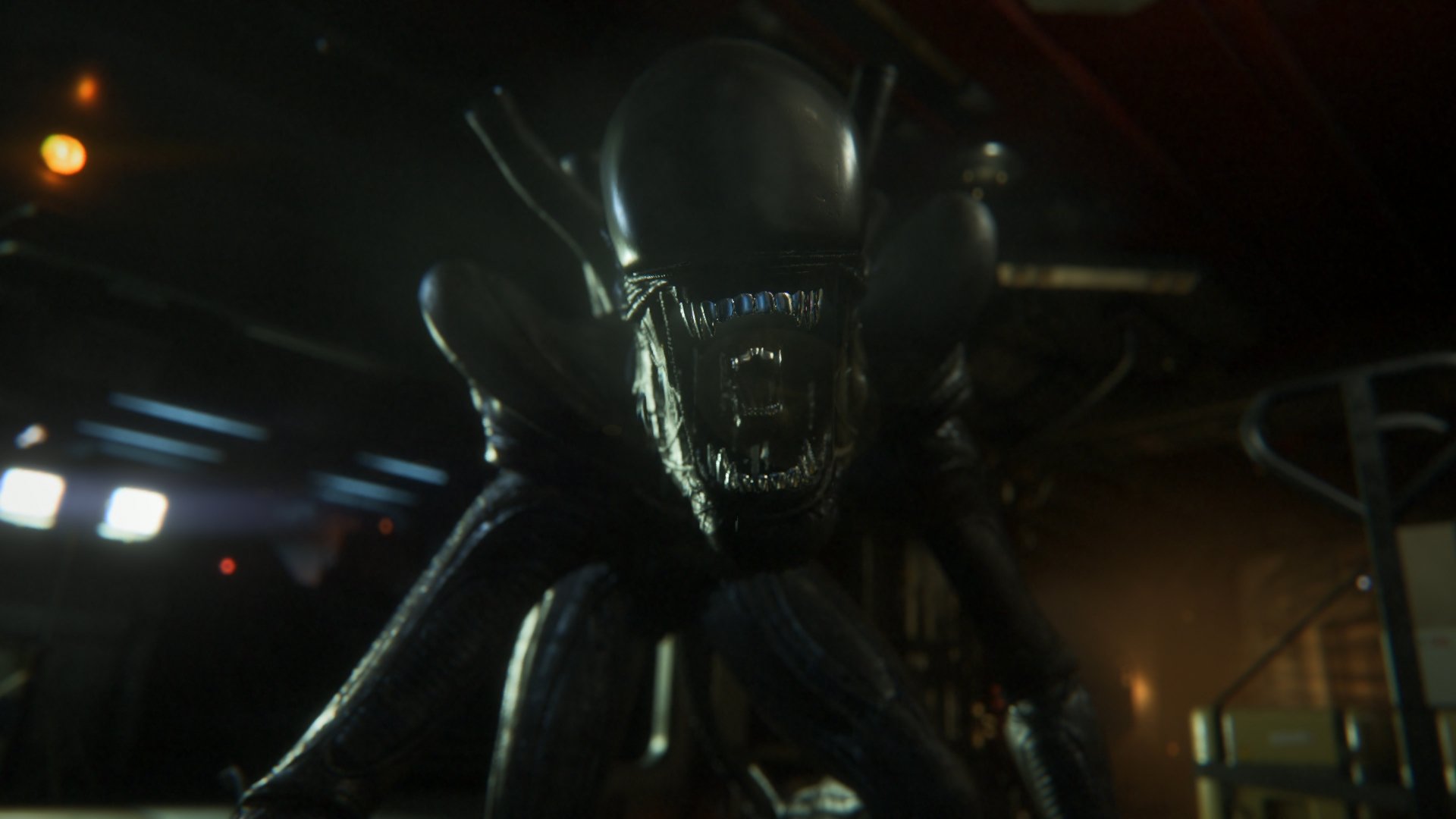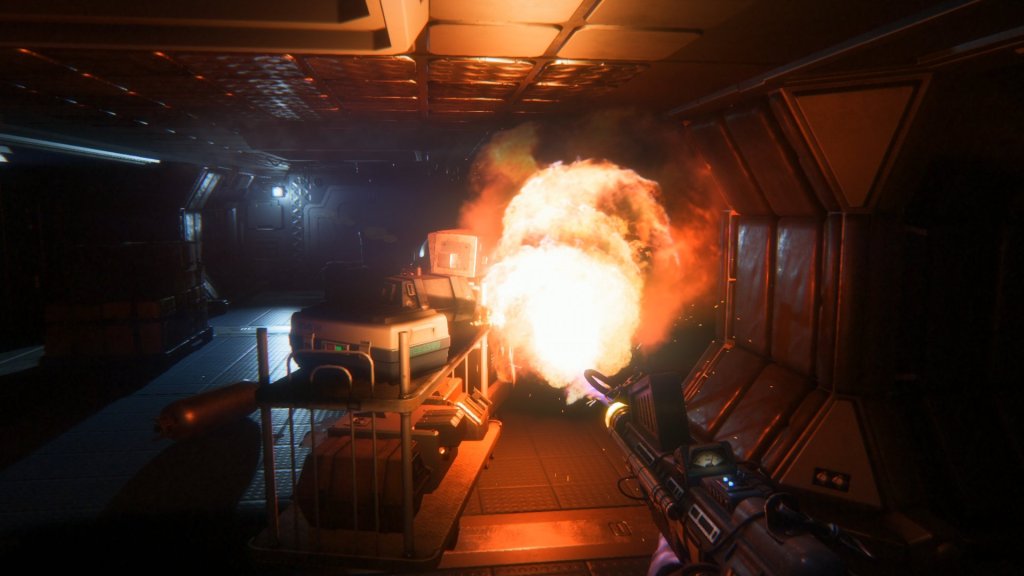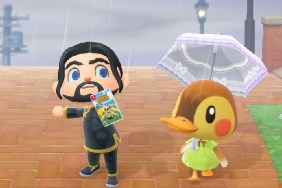I may be synthetic, but I'm not stupid.
In Creative Assembly's Alien: Isolation you play as Amanda, the daughter of the series protagonist Ellen Ripley, who is unceremoniously shepherded to Sevastopol. She finds herself on this city-sized space-station after a group of salvagers find the flight recorder to her mother's ship, The Nostromo, 15 years after her disappearance at the end of the original film. The station is in shambles when she arrives, with reports of a creature familiar to franchise fans that slowly picks off the supporting cast, one by one; that is, if the unstable "Average Joe" androids and the actions of the nefarious Weyland-Yutani Corporation—"The Company"—don't do so first.
It's almost impossible not to compare Alien: Isolation to last year's Aliens: Colonial Marines. Isolation and Marines—which became a whipping boy for overpromising games and farmed-out development—were developed parallel to each other by completely different developers, and both share many of the same story beats and plot developments. Both open with abortive space-docking action set-pieces, both involve brief explorative sections aboard the alien Derelict cruiser, and both tread the same hallowed ground of their source films with reverence that is sometimes so close to the films that it can be like playing someone's fan-fiction, in which they insert themselves into the story of the game as a way to replay the movie with themselves in the lead.
Both also have half-baked characters whom we are supposed to care about. This is Isolation's greatest weakness, as neither Amanda Ripley, or the crew she comes onto the Sevastopol station with, are ever developed for us to connect to them emotionally. The protagonist herself, who is referred to almost exclusively as "Ripley," soon feels like a placeholder for Sigourney Weaver's iconic female hero. This would be fine if the other characters were developed enough to hold the story together, but we never spend enough time with them to build the emotional bond necessary for their inevitable deaths to mean anything.
This is especially true of Ripley's early companions—Company woman Taylor and sympathetic android Samuels—both of whom the story treats like we are supposed to care about despite spending so little time with them. It feels like a good 30% of the story that should have focused on their growing relationships to Ripley was slashed in production. Like Colonial Marines, Isolation's best story beats are the audio tapes and emails that explain the station's slow descent into madness before Ripley arrived. These are handled with subtlety, wit, and a clever understanding of the Alien franchise's themes of corporate espionage and greed versus human necessity.
On design, Alien Isolation owes its greatest debt to the Dead Space franchise, which itself was a cross between an Alien film and a Resident Evil action-horror game. Though Isolation emphasizes stealth and distraction of enemies over combat, as trying to fight one's way through the game means certain death, the way it handles its not-quite-Metroidvania exploration of the station through upgradable tools, and incorporates a series of space explorative action set pieces—including its amazing infrequent spacewalk sections—follows the same rhythms of Capcom's revitatalization of the space-horror genre. Purely in terms of rhythmic beats between intensity, puzzle, and story sections, it follows the original Dead Space's example fairly thoroughly. It drops back a bit to the earliest Resident Evil games by having a local save system, where the game is saved by finding emergency telephones in the environments, where the only autosaves are when the player enters a completely new area (often by using the tram system or an elevator).
Where Alien: Isolation distinguishes itself is the way these individual scenarios play out. The Alien cannot be killed, so it must be avoided, distracted, set upon other foes, or sidestepped until it passes by, or luckily it jumps back into the air ducts. This is the most challenging and frightening part of the game, though it is mollified in the second half of the game by the inclusion of a flamethrower (and ample ammunition) that can be used to scare it off.
Other threats are more easily handled. A large portion of the game involves a series of precise gunplay and environmental puzzle encounters to confront the A.I.-controlled androids that have run amok on the station itself. Other factors include the other human survivors, often scavengers, who have banded together for survival, and look on anyone else approaching as a threat. One of the most devilishly fun parts is seeing the remorseless human scavengers confronted by The Alien or the androids, who both make short work of them while causing a distraction for the player to escape.
The best sections of the game actually avoid combat altogether. I came to welcome any chance to put on a space suit for the sensory experience, since the sound design in this game is simply incredible. If you have a 5.1 stereo system or a quality pair of headphones, play the game using them, since it's simply fantastic. These sections capture both the sense of claustrophobia of being trapped in the suit itself and the terror of the incredibly vast environments around the player, whether it is the alien planet with the Derelict cruiser or the vastness of space in the decaying orbit of the station as it begins to fall towards the gas giant below. The game creates visual spectacles that play out as you try desperately to perform some mundane task, like removing a docking clamp, while the environmental dangers grow larger and larger.

Graphically, on the PS4 at least, Isolation shines brightest when it has environmental effects to play with, like wisps of smoke and fog, or volumetric lighting in its engineering sections. When I saw a preview of the game earlier this year, a producer explained how the world of Ridley Scott's Alien was painstakingly recreated from tons of resources from the original film like the set-design schematics, concept art, and even polaroid pictures of the characters and the sets created for continuity purposes. This reverence is, as it was in Colonial Marines as well, one of the strongest design choices, and is much much stronger in this game, changing the feeling from watching a film to being within the film itself. In the smartest visual-design section of the game, after you escape the alien-infested space station to arrive on the freighter that found the Nostromo's flight recorder, different architectural or engineering features of the ship are cast in shadow, with pipes and cannisters similar to the alien's bulbous, sinuous body. The tension has you literally jumping at shadows.
Isolation's greatest sin in design, however, is its unevenness in style and substance. The game follows a fairly conventional path until its first false ending about halfway through. This first part of the game is a slow burn, building and growing in intensity over time in a strongly linear fashion. This early portion of the game places Ripley in constant peril, where every encounter is a question of life and death, and the pacing moves between periods of extreme stress and short puzzle sections of emotional release. Deaths happen often, especially if the player chooses to use the suggested but punishingly difficult "Hard" mode, where the Alien AI is sharp, and it simply finds you unless you are extremely careful. This difficulty level is basically like being a character in the movie, where the Alien's craftiness and otherworldly predatory intelligence is the scariest thing about it.
The second part of the game features an increase in Ripley's ability to defend herself, as she is gifted with more powerful weapons and plentiful ammo, like the shotgun and bolt-gun, and replacing items like the molotov cocktail that require various components to build with the more plentiful flamethrower. This section with more plentiful enemies becomes much less emotionally stressful, comprised of more kinetic and short, tense set pieces that drive the story forward. This section is less emotionally stimulating, as there is much less of a sense of peril.

The first half is not really better than the second half, or vice versa, but they are two distinctly different styles that make it feel like two different games that are split in half at the center. This might easily turn a player off who enjoys the ratcheted tension of the first section of the game to suddenly be thrust into the more action-oriented second half. On the flipside, someone who wants more action and a sense of empowerment may find the opening of the game a longer or more boring slog. The juxtaposition of the two styles don't necessarily mesh well, so it takes some readjustment that might have been solved had it transitioned more seamlessly.
Alien: Isolation is a solid survival horror game with high production value that has an extremely compelling setting that captures Ridley Scott's original film vision incredibly well. Its poorly written characters and abrupt transition in gameplay and style can be jarring, but overall it's a solid, incredibly striking example of the genre that uses its first person perspective to greater personalize the horror. Visually, its sense of scope, environments, and environmental effects and lighting make it a gorgeous example of current-gen graphics. While it has a few flaws, it's a frightening, innovative example of the survival horror genre, where AAA titles have been trending more and more towards action/horror mixes that, quite frankly, just aren't scary.
Say what you will about its faults, Alien Isolation is scary, and that counts for an awful lot.
-
Actually quite scary
-
Amazing environments
-
Uninteresting, poorly written characters
-
Excellent background world-building
-
Amazingly immersive sound design
-
Tense survival horror gameplay
-
Solid action horror gameplay
-
Survival horror/action horror don't mix well
-
Slavish devotion to source material
-
Can feel like indulgent fan fiction







